Today marks 44 years since Prince Charles and Princess Diana tied the knot at St Paul’s Cathedral in what was billed as the ‘wedding of the century’.
Their union marked a highpoint in the popularity of the Royal Family and was watched by a global audience of 750million across 74 countries
A public holiday was declared and 28.4million Brits watched the wedding on TV with a further 600,000 lining the streets of London.
But all was not well behind palace doors as whispers of adultery began to surface.
Royal biographer Gyles Brandreth, a ‘close friend’ of Prince Philip – though he later confessed that ‘royalty offer you friendliness, not friendship’.
This ‘friendship’ – or ‘friendliness’ – offered the broadcaster a unique insight into the workings of the royal household.
He wrote in his 2021 book, Philip The Final Portrait, that he has heard both sides of the divorce story, having friends who were also good friends with both Diana and Charles.
The former Tory MP met Prince Philip through his work with the Playing Field Association, and was often given privileged access to the Queen, to walk and talk with her as she went about her official duties.

Today marks 44 years since Prince Charles and Princess Diana tied the knot at St Paul’s Cathedral in what was billed as the ‘wedding of the century’
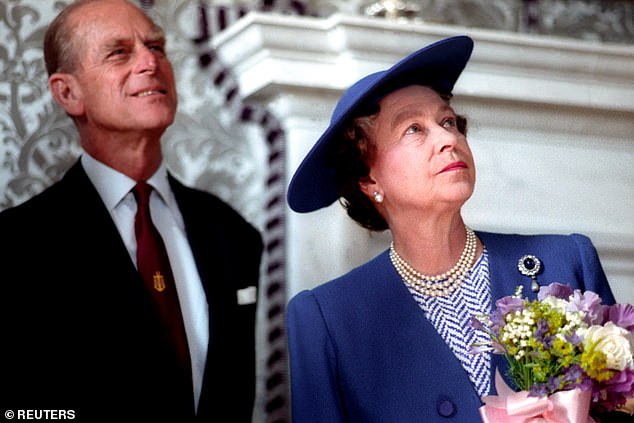
When it came to the Queen and her husband’s views on their son’s relationship, Brandreth wrote: ‘Unlike almost everybody else involved in the drama, Philip and Elizabeth could see both sides of the story, and had some sympathy with both sides too’
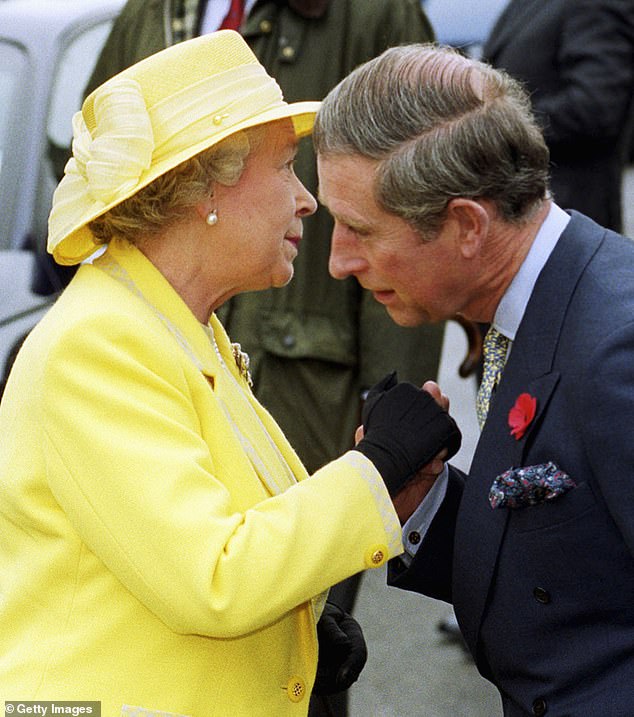
But by the summer of 1992, the Queen agreed that ‘something must be done’ about Charles and Diana’s relationship
And when it came to the Queen and her husband’s views on their son’s relationship, Brandreth wrote: ‘Unlike almost everybody else involved in the drama, Philip and Elizabeth could see both sides of the story, and had some sympathy with both sides too.
‘They kept their own counsel. They looked on, silent and dismayed.
‘They cared about Charles and they cared about Diana. The cared about their grandchildren, especially. And they cared about the Crown and the country, also.’
But by the summer of 1992, the Queen agreed that ‘something must be done’ about their failing relationship, just as the Sunday Times had began to serialise Andrew Morton’s book, Diana: Her True Story.
Brandreth wrote: ‘There are certainly two sides to the sorry story of the marriage of Charles and Diana.
‘Charles, according to Diana’s camp, was selfish, self-indulgent, thoughtless, unsympathetic, uncaring and cruel.
‘He was weak yet wilful, pathetic yet petulant. He behaved like a spoilt child.
‘Above all, he was jealous of his wife’s popularity with the public.
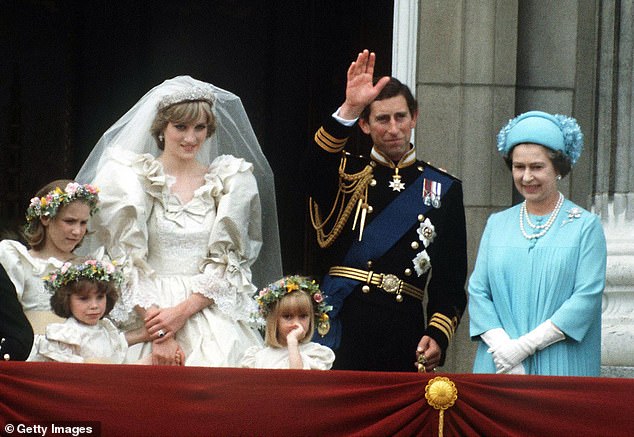
Brandreth wrote: ‘Philip and the late Queen cared about Charles and they cared about Diana. The cared about their grandchildren, especially. And they cared about the Crown and the country, also’
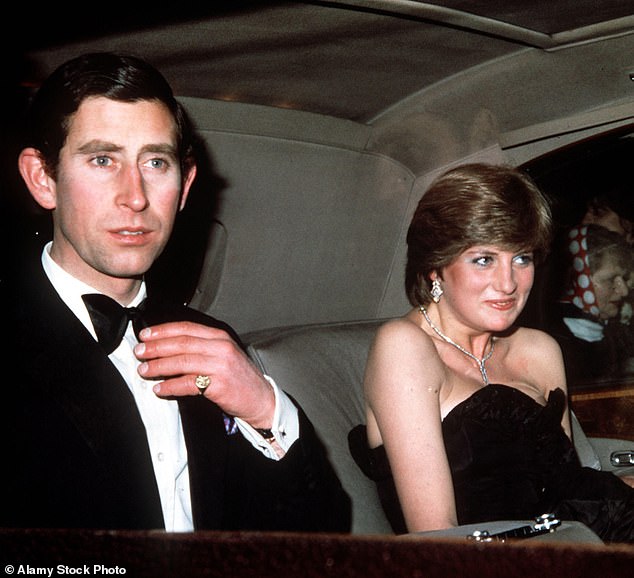
‘Charles, according to Diana’s camp, was selfish, self-indulgent, thoughtless, unsympathetic, uncaring and cruel. He was weak yet wilful, pathetic yet petulant. He behaved like a spoilt child. Above all, he was jealous of his wife’s popularity with the public,’ says Brandreth
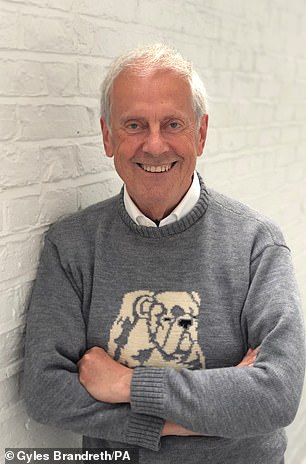

Gyles Brandreth wrote in his 2021 book, Philip The Final Portrait, that he has heard both sides of the divorce story, having friends who were also good friends with both Diana and Charles
‘Diana, according to Charles’ friends, was a sad case, almost from the start. She was in love with the position, but not the prince.
‘She was never close to understanding her man – or trying to. She was self-regarding, self-absorbed, self-obsessed.’
The sources for Diana’s authorised biography, written by journalist Andrew Morton, were acknowledged to be Diana’s friend.
But at Buckingham Palace, they suspected that Diana was the source – and they were right.
While Diana didn’t meet Morton directly, she recorded tapes answering his questions which became the basis of his book.
But even when Prince Philip challenged her directly on her input to the book, saying many feared she’d cooperated in some way, she told him that she hadn’t.
That June, the Queen and Prince Philip sat down with Charles and Diana at Windsor Castle.
It was reported that Charles said little, but Diana insisted that the time had come for a trial separation.
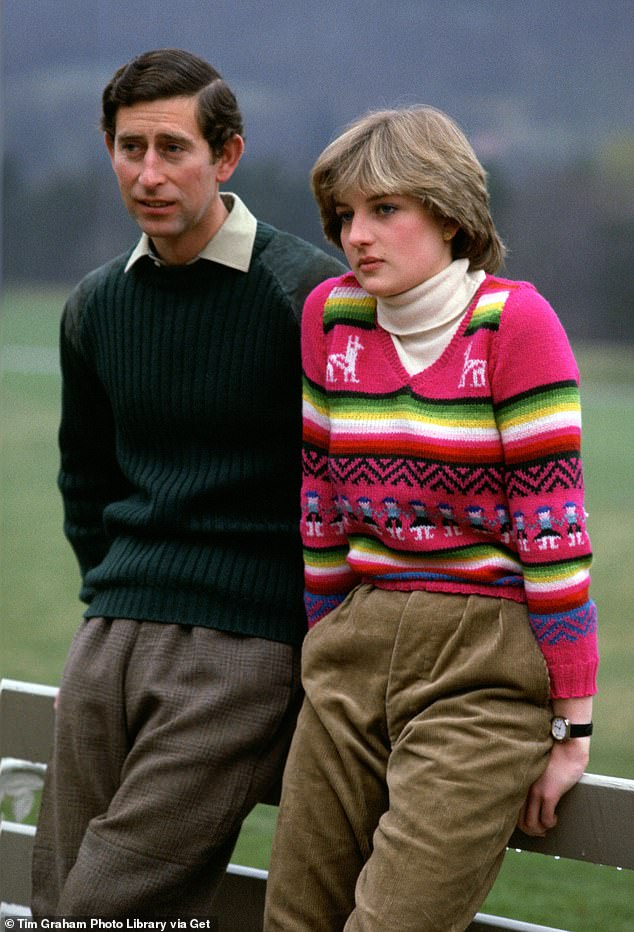
But by the summer of 1992, the Queen agreed that ‘something must be done’ just as the Sunday Times had began to serialise Andrew Morton’s book, Diana: Her True Story. The couple pictured in the days leading up to their wedding day
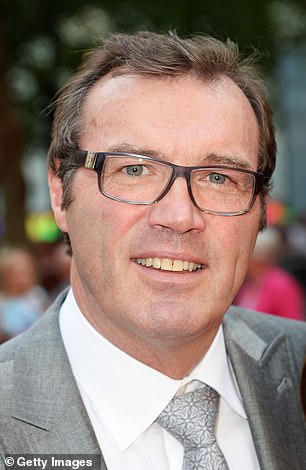

While Diana didn’t met Andrew Morton directly, she recorded tapes answering his questions which became the basis of his book, Diana: Her True Story
‘The Queen and Prince Philip were totally as one,’ wrote Brandreth.
‘They counselled the unhappy couple to search for a compromise, to think less of themselves and more of others, to try to work together to revive their marriage for their own sakes, for the sake of their boys, for the sake of Crown and country.’
The Queen proposed a second meeting the following day but Diana failed to turn up, prompting Prince Philip to react.
Brandreth noted that ‘I try to keep out of these things as much as possible’ was the prince’s line – unless he thought he had something useful to contribute.
He started writing the first in a series of letters to Diana.
Brandreth wrote: ‘He certainly didn’t condone his son’s on-going relationship with Camilla – not for a moment – but he did want Diana at least to try to see the situation from Charles’s point of view.’
Diana was upset by the letters and shared them with her closest girlfriends, Rosa Monckton, then managing director of Tiffany’s in London (Diana was godmother to her daughter, Domenica), and Lucia Flecha de Lima, the wife of the Brazilian ambassador.
Brandreth had lunch with the women in the aftermath, who noted that they helped craft replies to Prince Philip’s letters.
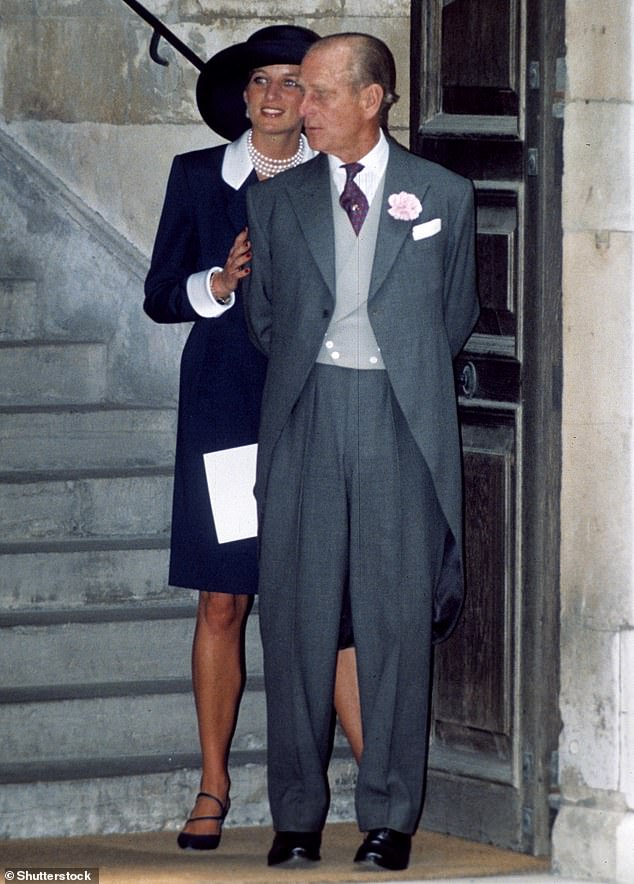
When Diana failed to turn up to a meeting with her in-laws to discuss her marriage to Charles, it prompted Prince Philip to write a series of letters to her that upset the princess

Brandreth wrote that the Queen and Prince Philip counselled the unhappy couple to search for a compromise, ‘to think less of themselves and more of others, to try to work together to revive their marriage for their own sakes, for the sake of their boys’
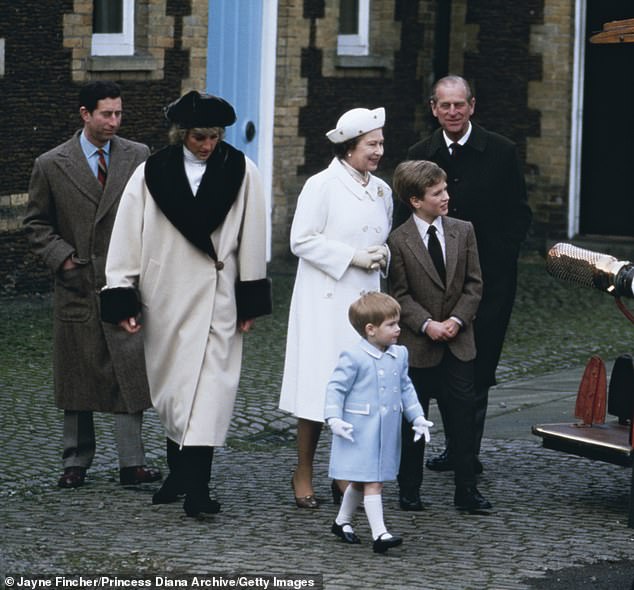
A Royal Family day out in 1988, as they visit a museum in Sandringham, along with Princess’s Anne’s son, Peter Philips (in suit, next to Prince Harry). Prince William is out of shot exploring a fire engine
The correspondence between Philip and his daughter-in-law continued for more than a year.
‘They were good letters,’ said Lucia, emphatically, ‘He’s a good man.’
Rosa Monckton agreed. ‘Actually, he was pretty wonderful,’ she said. ‘All he was trying to do was help. And Diana knew that.’
But according to the Princess’s former butler, Paul Burrell, Diana found many of Philip’s letters ‘brutal,’ and that he’d plainly never understood her.
‘To be fair,’ acknowledges Burrell, ‘Prince Philip did more to save the marriage than Prince Charles.’
Diana and Charles separated in 1992, although they continued to carry out their royal duties.
Biographer Andrew Morton wrote in his 2011 book, William And Catherine, that shortly before the formal separation announcement, Diana drove to Ludgrove, the prep school in Berkshire where William and Harry were boarders, to break the news to them first.
‘The boys’ responses are instructive – Harry seemed bewildered and almost indifferent, while his older brother burst into tears.’
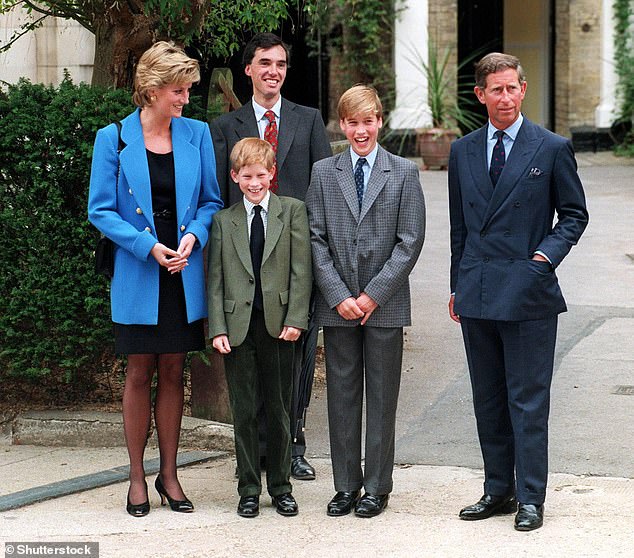
According to Andrew Morton, Princess Diana drove to Ludgrove, the prep school in Berkshire where William and Harry were boarders, to break the news to her children (the family pictured in 1995 at William’s first day at Eton College)

On April 9, 2005, Charles and Camilla Parker Bowles married in a civil ceremony in Windsor, followed by a Church of England Service of Prayer and Dedication at St George’s Chapel
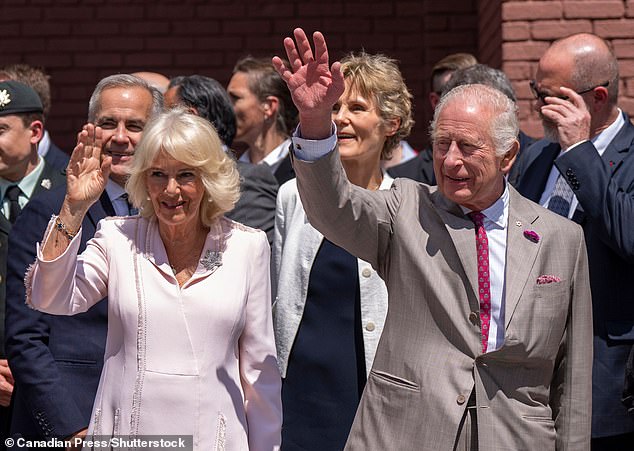
This year, Camilla and Charles celebrated 20 years of marriage. In recent years, they have navigated the death of Queen Elizabeth II and the King’s ill-health
After 15 years of marriage, Charles and Diana divorced on August 28, 1996.
On April 9, 2005, Charles and Camilla Parker Bowles married in a civil ceremony in Windsor, followed by a Church of England Service of Prayer and Dedication at St George’s Chapel.
The wedding, which was 35 years in the making, was described by the media as a ‘fairytale for grown-ups’.
This year they, celebrated 20 years of marriage and in recent years, they have navigated the death of Queen Elizabeth II and the King’s ill-health.
Royal correspondent Michael Cole once described Charles and Camilla as ‘bookends’ to one another as they ‘hold each other up’ and are ‘very devoted to one another’.
It seems that after all, King Charles did get his ‘happily ever after’.











